The ao dai Vietnam is a beautiful garment and an important part of Vietnamese culture.
As the national costume of Vietnam, the ao dai Vietnam is highly regarded for its graceful lines and intricate details. It represents the grace and sophistication of Vietnamese culture and has become an iconic symbol of elegance and beauty.
When visiting Vietnam, tourists often seek information on traditional Vietnamese clothing, including the history and significance of the ao dai Vietnam.
They also want to know where to obtain or rent one and the best places to wear or photograph it. Ao dai Vietnam is a captivating sight that should be noticed, and it provides a unique opportunity to connect with Vietnamese culture meaningfully.
Contents
- 1 The History and Cultural Significance of Ao Dai
- 2 Colors and Meanings: Decoding the Ao Dai Palette
- 3 Where to Find and Acquire Ao Dai in Vietnam?
- 4 Modern Interpretations: The Evolution of Ao Dai
- 5 Pairing Ao Dai with Complementary Accessories
- 6 Experiencing Ao Dai in Vietnam: Where to See and Capture Its Beauty
- 7 Conclusion
The History and Cultural Significance of Ao Dai
The ao dai has a rich history in Vietnam and has evolved over time to become the iconic garment we know today.
Its origins can be traced back to the 17th century when it was first introduced as a court garment worn by both men and women. Originally, it was a loose-fitting outfit that covered the entire body, but it gradually evolved to become the form-fitting tunic and pants we see today.
During the Nguyen Dynasty (1802-1945), the ao dai underwent significant design changes. The women’s version was designed with a high collar and tight-fitting waist, while the men’s version had a more relaxed fit.
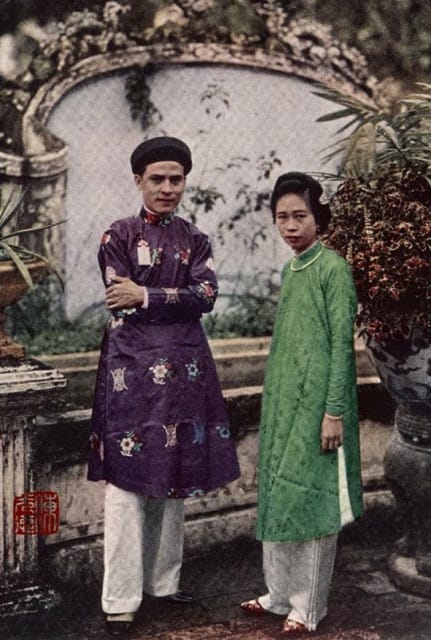
In the 1930s, the ao dai was redesigned with a more Western-influenced style, featuring shorter sleeves and a looser fit. These changes reflect the changing times and influences that have shaped Vietnam’s culture.
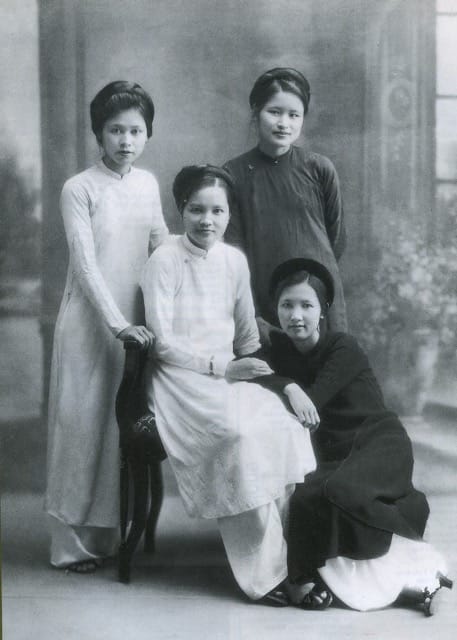
The traditional ao dai is usually made of silk or satin and is brightly colored with intricate embroidery and patterns. Each region of Vietnam has its own unique style of ao dai, with different colors, patterns, and materials.
For example, the ao dai of the northern region is often made of wool or cotton and has a simpler design. In contrast, the ao dai of the southern region is made of silk and features more elaborate patterns and designs.
The ao dai is not just a garment for special occasions, but it is also worn as everyday clothing. It is a symbol of national pride and identity and represents the beauty and grace of Vietnamese women. In fact, the ao dai is considered one of the world’s most elegant and feminine traditional garments.
Today, the ao dai is still an important part of Vietnamese culture and heritage. It is worn for various occasions, such as weddings, festivals, and national celebrations. It is also a popular attraction for tourists visiting Vietnam, who can learn about the garment’s history and cultural significance.
Many travelers seek out the garment to purchase or rent, and there are many shops and markets throughout the country where one can find a beautiful ao dai.
The ao dai is not just a piece of clothing but is also a symbol of national identity and a representation of Vietnamese values and traditions. Anyone who wears an ao dai showcases its beauty and elegance and expresses respect for Vietnamese culture and heritage. The ao dai is truly a timeless masterpiece that continues to captivate people’s hearts and minds.
The ao ba ba is a popular traditional outfit among women in Vietnam, with varying designs and styles depending on the production region.
Colors and Meanings: Decoding the Ao Dai Palette
The ao dai Vietnam is an integral part of Vietnamese culture and has a rich history that dates back centuries.
This traditional garment is a long dress that can be worn by both men and women and is known for its vibrant and captivating colors. These colors are not only pleasing to the eye but also have symbolic meanings, making the ao dai Vietnam a unique and significant piece of clothing.
Typically, the ao dai Vietnam is composed of two colors, one for the top and one for the bottom. The most common color combinations are red and yellow, blue and white, or black and white.
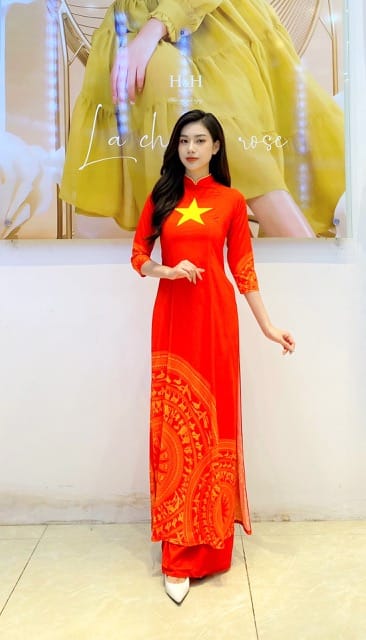
Each color combination has its own symbolic representation. For instance, red and yellow symbolize Vietnam’s national colors, while blue and white represent the sky and clouds.
Black and white, on the other hand, represent the yin and yang of the universe. These color combinations are beautiful and hold cultural significance, making the ao dai Vietnam a must-see for anyone visiting the country.
The ao dai Vietnam is still commonly worn today for weddings, formal events, and other special occasions.
The color of the ao dai is an important factor in its significance, and different colors can represent different meanings. For example, red is often worn during weddings to symbolize joy and good luck, while black is usually reserved for formal events as it conveys sophistication and elegance.

When selecting the right ao dai color for an occasion, it is important to consider personal preferences and the event context. Bright and cheerful colors like pink or yellow may be ideal for a wedding, while a more muted color like navy blue or grey may be better for a formal event. Regardless of the color chosen, the wearer should feel confident and comfortable in the garment.
Where to Find and Acquire Ao Dai in Vietnam?
The Ao dai, Vietnam’s traditional clothing, is a must-see for anyone visiting the country. Both men and women wear this iconic dress and consists of a tunic top and pants. It is usually made of silk or satin, which gives it an elegant and flowing look.
When shopping for an Ao dai, there are several factors to consider, including the fabric, design, and customization options. Silk is the traditional choice, but cotton or polyester options are also available. Silk is lightweight, comfortable, and breathable, perfecting for Vietnam’s hot and humid climate.
In terms of design, various prints and patterns are available, ranging from traditional to modern. Some Ao dai feature intricate embroidery or beadwork, while others have simpler designs that are more understated. The design of an Ao dai can reflect the region of Vietnam it comes from or the occasion it is intended for.
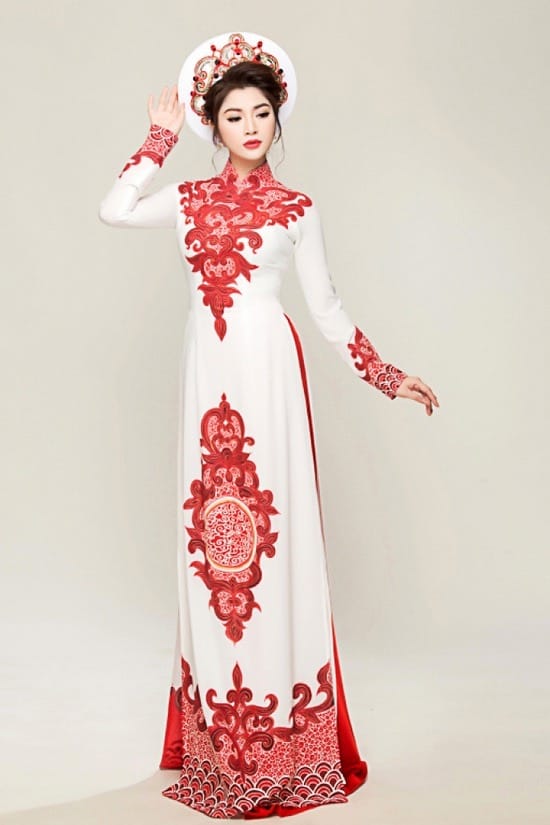
Customization options are also available, with many shops offering tailor-made Ao dai that is perfectly fitted to the wearer’s body. This option ensures that the Ao dai fits well and is comfortable to wear. It also allows travelers to choose the fabric and design they want, making their Ao dai a truly unique and personal souvenir.
Travelers can find Ao dai in many places in Vietnam, including markets, boutiques, and tailor shops. Some shops even offer same-day tailoring services, making it possible for travelers to have their Ao dai made and ready to wear before they leave the city.
Modern Interpretations: The Evolution of Ao Dai
Vietnam’s traditional garment, the Ao dai, has evolved to include innovative designs and modern trends while still retaining its traditional elements.
In recent years, the garment has gained popularity among the fashion-forward, with designers experimenting with new cuts, fabrics, and patterns to create contemporary versions of the timeless garment.
As a result, the modern Ao dai has been featured on high fashion runways and is regularly seen in fashion shows and events around the world.
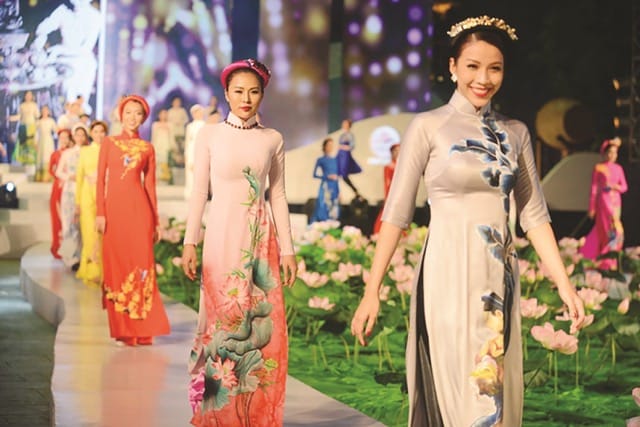
Using different fabrics is one of the most significant changes in the modern Ao dai. Designers have started experimenting with materials such as cotton, chiffon, lace, and traditional silk and satin. These new fabrics offer a lighter and more comfortable alternative, making the garment more wearable in everyday settings.
Another significant change in the modern Ao dai is the variety of colors and patterns available. While traditional Ao dai mainly featured subdued colors, the modern version has embraced a wide range of colors, from pastels to bright neons. Bold and intricate patterns are also becoming increasingly popular, adding a unique and modern touch to the garment.
The modern Ao dai has also been adapted to suit different occasions, including both formal events and casual outings. Shorter cuts and more fitted designs have been introduced, making it easier to wear the garment in a more relaxed setting. The traditional tunic-style top has also been modified to include different necklines and sleeve lengths, giving it a more versatile and contemporary look.
Pairing Ao Dai with Complementary Accessories
The traditional ao dai is a beautiful garment that must-see for Vietnam travelers. The ensemble consists of an ao dai top and trousers, but the accessories truly bring out its elegance. There are various accessories to choose from, including conical hats, Vietnamese shirts, and traditional jewelry.
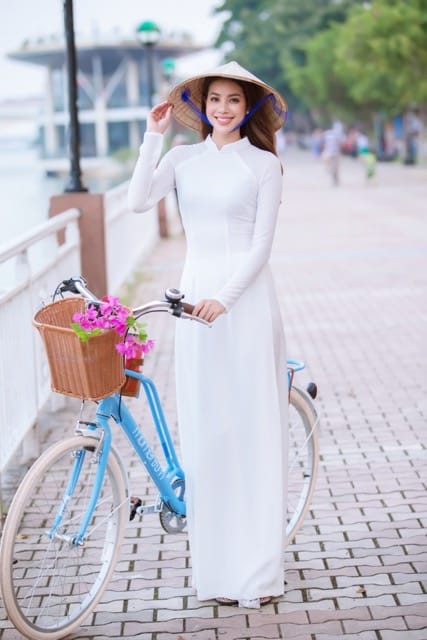
Creating a cohesive look is crucial when accessorizing your ao dai. To achieve this, it is essential to consider the color and pattern of the ao dai and match your accessories accordingly. For instance, if you are wearing a red ao dai, you can complete the ensemble with a red conical hat and traditional jewelry. You can also layer the ao dai with a Vietnamese shirt for a modern and trendy look.
Accessorizing your ao dai can help you create a captivating look. Whether you’re attending a special event or exploring the streets of Vietnam, you can make a statement in this traditional and elegant ensemble.
By taking the time to accessorize your ao dai, you can elevate your look and make the most out of this beautiful garment.
Experiencing Ao Dai in Vietnam: Where to See and Capture Its Beauty
Vietnam is home to many captivating cultural events and traditional performances that showcase the beauty of ao dai. Travelers can witness ao dai being worn by locals during festivals, traditional performances, and other cultural events. Ao dai is an iconic symbol of Vietnamese culture and has been worn for centuries.
The traditional clothing is often seen during Lunar New Year celebrations, where locals dress in their finest ao dai to pay homage to their ancestors.
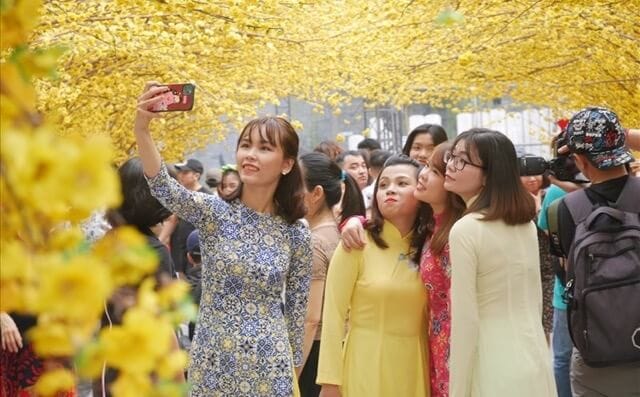
Ao dai is also popular for traditional performances, such as water puppet shows and folk music concerts. No matter where you go in Vietnam, you’re sure to find ao dai being worn by locals and tourists alike.
This traditional Vietnamese clothing is a timeless symbol of beauty, elegance, and culture. It is also the perfect way to capture stunning photographs as memorable travel mementos.
Ao dai is available for rent at many tourist locations, and there are a variety of places to wear and photograph it. From traditional temples to vibrant city streets, there are plenty of opportunities to snap the perfect picture. For an added touch of authenticity, consider having a local tailor custom-make an ao dai for you.
No matter where you decide to take your photos, you will indeed have a beautiful and unique memento of your travels to Vietnam.
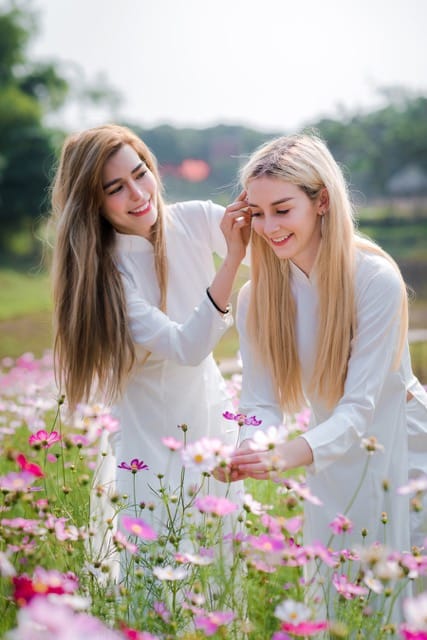
Conclusion
Ao dai Vietnam is an integral part of Vietnamese culture and history and a must-see for travelers. Its traditional colors and meanings, modern interpretations, and complementary accessories make Ao dai a captivating piece of clothing.
With many places to find and acquire ao dai in Vietnam, travelers can experience its beauty in person or take home a piece to remember their trip. Ao dai is a timeless piece of clothing that will continue to captivate travelers for years to come.


Related Posts
Saigon’s “Flower Market Replica”: Where To Find Them
Ho Chi Minh City’s floral charm is not limited to its bustling wholesale markets. Imagine wandering through a place where vibrant petals, fragrant blooms, and the spirit of traditional Vietnamese markets come alive—without the overwhelming crowds. A flower market replica captures that magic, blending the beauty of fresh flowers with the charm of a curated, […]
Is it Safe to Travel to Vietnam Right Now? A Complete 2025 Guide
Vietnam has emerged as one of Southeast Asia’s most captivating destinations, drawing millions of visitors annually with its rich culture, stunning landscapes, and incredible cuisine. However, many travelers still ask: Is it safe to travel to Vietnam right now? This comprehensive guide provides you with everything you need to know about Vietnam travel safety in […]
Ho Chi Minh Cu Chi Tunnels Tour: The Ultimate Guide
The Cu Chi Tunnels stand as one of Vietnam’s most remarkable historical sites, offering visitors a profound glimpse into the ingenuity and resilience displayed during the Vietnam War. For travelers, a Ho Chi Minh Cu Chi tunnels tour represents an essential experience that combines education, adventure, and deep cultural understanding. This comprehensive guide will help […]